-
Why Air Quality Testing Is a Must Before Buying a Home
Purchasing a home is likely to be one of the biggest investments that you will make in your lifetime—so you should be absolutely sure that you know about any issues that are present in your new home! This is why scheduling a variety of inspections during the home-buying process is so important. One type of inspection that is commonly overlooked is air quality testing. If you are getting ready to purchase a home and are interested in environmental services in San Francisco , continue reading to find out more about the importance of scheduling an air quality analysis.

There are many things that are invisible to the eye but can affect a home’s air quality. For instance, asbestos may be present in a home and could release dangerous fibers into the air if disturbed. The good news is that asbestos testing can alert you to the presence of this material before you buy a home. Another common issue that can impact air quality is mold growth. Mold may hide behind walls, in ceilings, or in basements, but mold testing using air samples can alert you to the presence of mold spores. Air quality testing can also be performed to detect lead, dangerous chemicals, and bacteria.
-
Answers to Your Questions about Mold Testing
Excess moisture in your home can lead to mold growth, and mold can lead to a range of problems. From headaches and allergies to structural damage, mold growth is dangerous for both your health and the stability of your house. If you suspect that your home has mold growth, it may be time to schedule mold testing in San Francisco . Continue reading to learn the answers to some common questions about testing for mold.
When do I need mold testing?
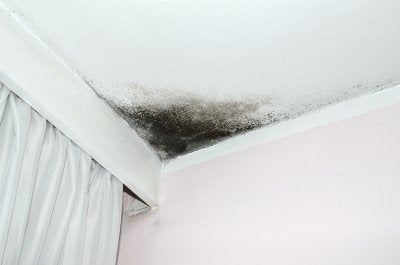
Mold testing is useful when you suspect that conditions are right for mold, but have not noticed visible signs of mold growth. For instance, if you’ve recently experienced a plumbing leak or a flood in your home, scheduling mold testing may be advisable. There are some signs of mold that you cannot see, such as a musty odor or unexplained headaches—if you notice these, arrange to have your home tested for mold. Another instance in which mold testing can be helpful is when you are buying a home; if mold is present, it will be useful to know this before you complete the home purchase.
How does mold testing work?
There are a few different methods that your mold inspection company can use to test your home for mold. One method is with air samples—with this option, a special cassette is attached to an air sampling pump, and air is pumped through the cassette, depositing any mold spores in the air onto a slide inside the cassette. This slide can then be analyzed in a laboratory for signs of mold. Surface mold testing is another option—to do this, a cotton swab can be wiped along a surface where mold growth is suspected. The swab is then analyzed to determine if mold is present. If mold growth is already visible on a surface, surface testing using a piece of sticky tape can be completed to determine the type and number of mold spores growing there.
Who should I contact for mold testing?
While do-it-yourself mold testing kits are available, they are not as reliable as professional testing, and you may end up disturbing any mold spores growing there. For these reasons, it is important to contact a reliable mold inspection company to ensure that your home is safely and effectively tested for mold.
-
Top Reasons to Schedule IAQ Testing Before Renovating Your Home
Every day, your home’s indoor air quality, or IAQ, can have a significant effect on your family’s comfort and health. However, it is particularly important to consider your IAQ before beginning any renovations. If you are planning a home renovation in San Francisco, then there are several good reasons for you to schedule indoor air quality testing before you get started.
To Address Moisture
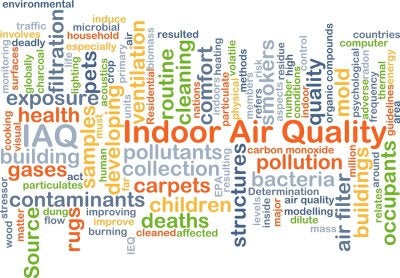
One popular home remodeling option is to convert a basement into a living space. If you are thinking about furnishing your basement, for example, then indoor air quality testing should be considered an essential part of the initial planning process. Basements are areas that are particularly vulnerable to moisture problems. If your basement is affected by high humidity or water leaks, then this can cause mold growth and attract pests into the space. Before you take on any type of remodeling project, have the air tested so that you can address any moisture problems first.
To Add Ventilation
Having a proper ventilation system is crucial for ensuring your family’s comfort and maintaining your indoor air quality. If you are planning to remodel an area of your home, then consider having an IAQ test performed first to determine how well it is ventilated. If the ventilation is lacking, then the remodeling project can provide you with an excellent opportunity to remedy the situation.
To Control Mold
Mold is a common cause of IAQ problems, and it’s not uncommon for it to grow undetected in homes until it starts causing health problems for those who live there or growing into a visible location. While mold can continue to spread on its own without much assistance, a home remodeling project can dislodge spores and allow them to spread the mold throughout your home. To help prevent turning a mold problem into a bigger one and to identify any mold problems that your home already has, consider scheduling IAQ testing before you begin your next home renovation.
-
The Link Between Renovating and Indoor Air Quality
When planning your home renovation project near San Francisco, you are probably busy looking at paint colors, new appliances, and your future decorating scheme. These are important choices to make, but your indoor air quality is just as important to consider. You may not realize that performing renovations on your home may result in future breathing problems for you or your family. Continue reading to learn more about the link between your indoor air quality and your home renovations .
Updating Outdated or Banned Materials
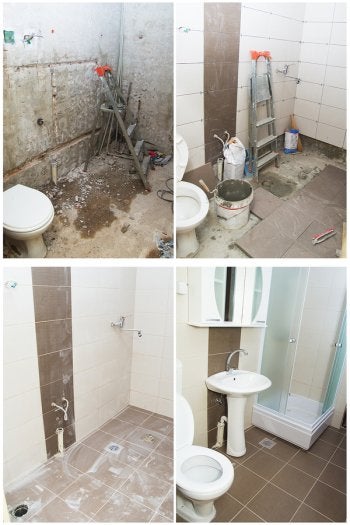
During your renovation project, you may be updating your bathroom or kitchen with better and newer appliances. However, you must also look to the flooring, painting, and other building materials that were used in addition to your older appliances. Some building materials, such as paint, may contain banned substances, like lead, that could cause significant health problems. If you are updating a bedroom or living room, then consider the age of the flooring. Outdated carpeting may not only be displeasing to the eye, but you may have poor indoor air quality from it too.
Staying Protected While Renovating
While you are doing any sort of home remodeling, you should remain protected at all times. If you are working in an attic or crawlspace, then wear a mask to protect yourself from breathing in dust or other harmful contaminants. In the event you are working with wood or building materials—such as hanging drywall or knocking down walls—then wear a breathing mask to avoid inhaling drywall and wood dust. You must keep yourself protected however possible when performing home renovations.
Testing Air Quality Before Renovating
Proactively testing the indoor air quality before renovations is another smart way to prevent health problems in the future. Professional technicians can test your indoor air quality to locate potentially harmful bacteria, such as mold or asbestos. They can also help you choose the right building materials and products to ensure your home renovations are safe. These services are essential to performing a healthy and safe remodeling project.
-
Why Choose Healthier Materials for Your Remodel?
Just as you are probably choosing more energy-efficient appliances, you will benefit most by choosing healthier building materials during your house remodel. Healthier home renovations near San Francisco will result in a more enjoyable remodeling project and a better environment for you and your family to live in. Here is a quick look at some healthy materials to use for your home remodeling and why you can benefit most by choosing them:
There are certain materials that have been deemed as “volatile organic compounds,” also called VOCs. These materials should be avoided at all cost during your home remodeling project. Products filled with VOCs can cause harmful off-gassing after your renovation is complete, which may result in health problems. You should also choose building materials that prevent mold and bacteria growth. Many flooring and paint materials offer this benefit, and it is healthier to choose these for your next home remodeling project. Mold, mildew, and other bacteria can cause a significant amount of respiratory problems, including increased asthma symptoms, allergies, and even cancer. Choose healthier home renovation materials to ensure you have a healthy renovation and future.

-
A Look at the Five Indoor Air Quality Categories as Defined by the EPA
Home renovations and new constructions are using better and more insulated materials than ever before. However, these same materials could also be causing poorer indoor air quality in San Francisco and around the country, according to the Environmental Protection Agency, or EPA. Watch the video for a more in-depth look at five indoor air quality concerns .
- Carbon monoxide, even in low doses, can cause headaches, fatigue, and dizziness.
- Microbial growths, like mold and bacteria, can cause asthma, headaches, and more severe health problems.
- Allergens, such as pollen and dust, can cause allergy symptoms.
- Infectious diseases, like colds or flus, can continually circle through a home’s HVAC system.
- Home remodeling materials, gases, and pesticides all fall under the toxic compounds category.
Homebuilders and renovators should strive for healthier home renovations by using healthier materials. They should also have professional air quality testing performed.
-
How You Can Benefit from Testing a Home’s Air Quality Before Buying
Your home inspection should include a thorough indoor air quality test before you officially purchase your new home. This home inspection in San Francisco can tell you a number of features you may not know before buying a house , such as if mold is growing and other dangerous air quality issues.
You can locate future problem areas.
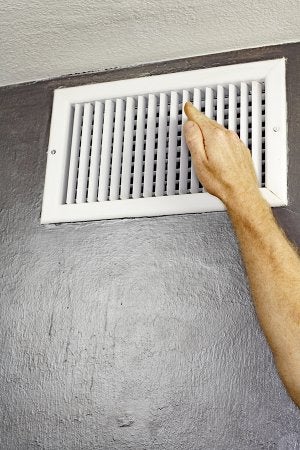
Many homes may have certain areas of the house, such as the bathroom, that may be hotspots for the occasional mold growth or bacteria buildup. There may be a ventilation register or section of the HVAC system that has reduced airflow. These are not reasons to back out of buying your dream home. However, they are good traits to know as you go through buying a house, and they can only come with an indoor air quality test. You can then make the decision to remodel those areas after you have purchased the home.
You can back out before purchasing an unsafe home.
On the other hand, there are some houses that have a host of problems, including extensive mold growth, gas leaks, plumbing problems, and many more. Unless you are looking for a fixer-upper house, you should not be pulled into purchasing an unsafe home. A thorough home inspector will test the home’s air quality, plumbing, electricity, and all other utilities to ensure the house is safe for you and your family. If it is deemed unsafe or has too many damages, then you can find out before you move in.
You can learn more about your future home.
Even though you are likely to receive a lot of history from your realtor or the former owners, there are certain features of a new home that can only be answered with a home inspection. You may find out where there were previous mold problems or if fire and smoke damage had ever occurred. These are just a few of the many benefits you will find when an inspector performs an indoor air quality test.
-
The Most Common Causes of Poor Indoor Air
You may not even realize that your indoor air quality has deteriorated until your health, or the health of your family, has deteriorated. There are certain causes, such as poor ventilation and various chemicals, which could be negatively affecting your air quality near San Francisco. Continue reading for a look at common causes of poor indoor air quality and how it may be affecting your family’s health.
Poor Ventilation

If your home is not properly ventilated or your air conditioner is not working properly, then you could be looking at very poor indoor air. Dust, dander, pollen, and various other particles should be circulated through your home and outside through the work of the air conditioner and vents. If these are poorly connected or broken, then your air quality could be suffering greatly.
Chemicals Located Indoors
Cleaning chemicals, smoke, and paints are just some of the chemicals that may be present in your home at any one time. These chemicals can severely impact your air quality and potentially cause health problems, if they are not addressed properly. If you are working with potent cleaning chemicals or painting, make sure there is plenty of open ventilation to allow airflow through your home.
Mold or Mildew
Mold, mildew, and other dangerous organisms can impact your air quality as well as your family’s physical health. If your indoor air quality is typically humid or filled with moisture, then your home may be at risk to develop mold or mildew. If these dangerous organisms are allowed to progress, you may be facing asthmatic symptoms, as well as severe respiratory conditions.
Chemicals Located Outdoors
Outdoor chemicals can possibly affect your indoor air quality, as well. If you live near or next to dumping grounds, processing plants, and other industrial buildings, then you may be at risk for inhaling various type of chemicals, gases, and contaminants. Consult a professional on improving your indoor air quality to negate any effects caused by these nearby industries.
-
Exploring the Contaminant Testing Process
Whether you are buying a new house, planning a home renovation, or want to improve the comfort of your home, testing a house’s indoor air quality in San Francisco is a smart decision. These thorough evaluations can alert you to problems that affect the safety of the building’s air, allowing you to address any issues as needed.
When a house is tested for contaminants such as asbestos, lead, and mold, the process usually involves several steps. First, an experienced team arrives at the home and conducts an extensive inspection, during which the members will search for any areas that could harbor contaminants that might affect the house’s indoor air quality.
After evaluating all areas of the building, the team will carefully obtain samples of any suspect materials. Next, the samples are sent to a lab for testing and identification. Finally, the testing company will report the findings to you and discuss any recommended treatment or abatement services to improve the home’s indoor air quality.
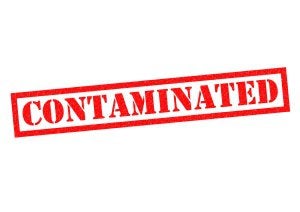
-
Reasons to Talk to Your New Construction Contractor About Air Quality Testing
When planning a home renovation near San Francisco, you have a lot to consider regarding the project’s design. In addition to dimensions, layout, and style, the effect of the remodel on your indoor air quality , or IAQ, should be factored into your decisions. During new construction, there are several reasons why you should talk to your contractor about your home’s air quality.
To Make the Most of Your Home Remodel

Whether your house is new or old, there may be existing materials that are affecting your family’s health. If it is poor, the quality of your indoor air can cause allergic reactions, discomfort, and even illness for anyone residing in the home. A renovation, however, gives you the ideal opportunity to address the construction of your home in a way that improves your IAQ. After having an air quality test performed, talk with your contractor about any areas you’d like to remove or repair to address any IAQ issues.
To Remove Unhealthy Materials from Your Home
Home remodeling gives you the chance to tear out or contain any dated, damaged, or unhealthy materials that may be affecting your IAQ. For older houses, lead and asbestos are common issues that homeowners face during a remodel. Also, bacteria, mold, and mildew can develop in both newer and older homes. Before you begin your renovation, schedule a professional IAQ evaluation for your home to identify any contaminants you are facing. Next, speak with your contractor about the best course of action regarding the removal of problematic construction materials and any need for lead or asbestos removal services.
To Choose Materials that Support Better Indoor Air
In addition to addressing any problematic materials in the construction area, the home remodel allows to you to replace these with new and better options. Today, there are products available that can resist the growth of bacteria, mold, and mildew to help protect your home’s IAQ. Also, the VOCs, or volatile organic compounds, found in some construction materials can release vapor into the air that lowers indoor air quality, so speak with your contractor about your low or no-VOC options.
RECENT POSTS
categories
- Uncategorized
- Lead
- Mold
- San Francisco Mold & Asbestos Removal
- Indoor Air Pollution
- Mold Remediation
- Asbestos
- Safe Air Fast
- Mold Inspection
- Remediation
- Bacteria Testing
- Asbestos Testing
- Abatement
- Lead Testing
- Sewer Line
- Lead Survey
- Mold Testing
- Air Quality Inspection
- Home renovations
- Allergies
- Renovation Contractor
- Infographic
- lead paint
- Air Quality
- Air Quality Test
- Mold removal
